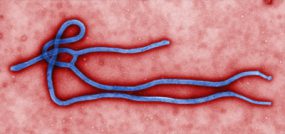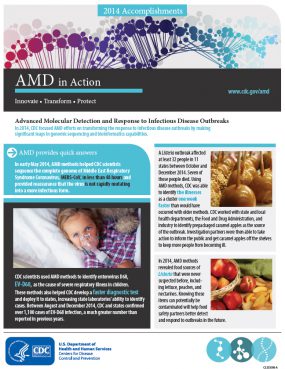AMD Activities: 2014
In early May 2014, AMD methods helped CDC scientists sequence the complete genome of Middle East respiratory syndrome coronavirus, MERS-CoV, in less than 48 hours and provided reassurance that the virus is not rapidly mutating into a more infectious form.
In 2014, AMD methods revealed food sources of Listeria that were never suspected before, including lettuce, peaches, and nectarines. During the fall of 2014, a multi-state outbreak of listeriosis sent 34 people to the hospital and seven people died. Whole genome sequencing helped pinpoint the unusual source.

During the fall of 2014, a multi-state outbreak of listeriosis sent 34 people to the hospital; seven people died. Listeriosis is caused by the germ Listeria. Listeriosis is rare, but it strikes hard at the most vulnerable people – older adults, pregnant women, newborn babies, and people with weakened immune systems. Because listeriosis can be deadly, it is important to identify the source of the germ quickly to keep more people from getting sick. However, Listeria is difficult to identify and can lurk in foods that we don’t suspect.

In mid-August 2014, hospitals in Missouri and Illinois notified CDC of an increase in admissions of children with severe respiratory illness. The hospitals sent specimens to CDC’s Polio and Picornavirus Laboratory to sequence the virus and determine the type. CDC identified enterovirus D68 (EV-D68) in most of the specimens.

With the largest Ebola outbreak in history raging through West Africa, understanding whether the virus is changing as it spreads through different populations can help responders know what treatments to use and also help research laboratories develop new tools to speed diagnosis in the field.
